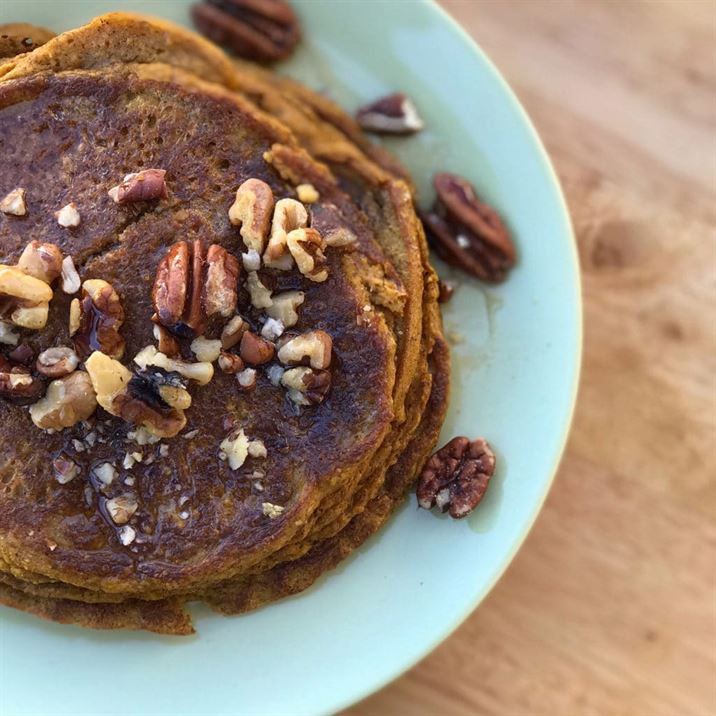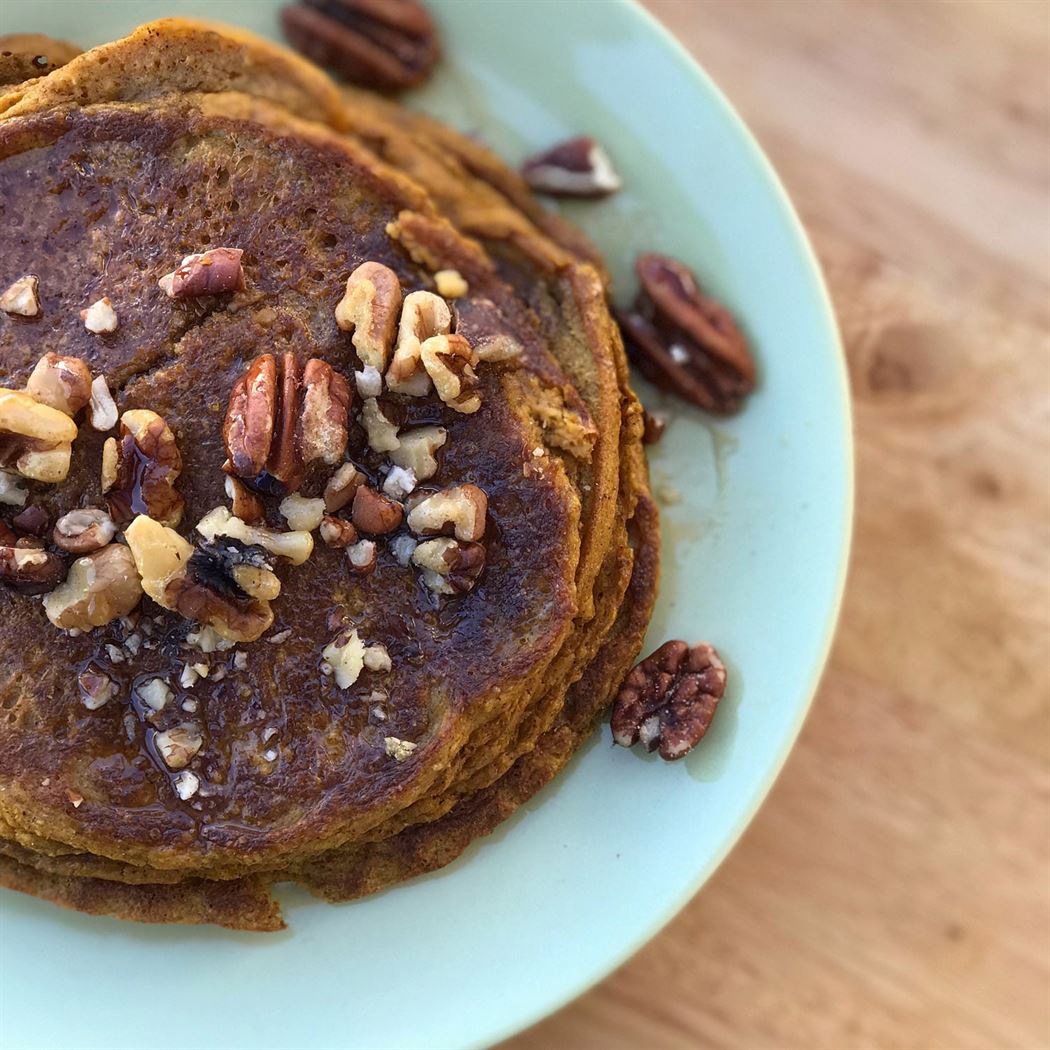
A plate of pumpkin oatcakes baked by Caroline Carnero, a senior majoring in dietetics at Montclair State University.
Photo courtesy of Caroline Carnero
Thanksgiving is one of the most beloved holidays in America. Nothing feels better than getting time off from school to relax with your family, cook a good dinner and of course, eat. However, no matter how scrumptious a Thanksgiving meal is, it often leaves you feeling more stuffed than the stuffing itself.
According to research from the Calorie Control Council in October 2017, the typical American calorie intake during Thanksgiving Day is more than 4,500 calories and 229 grams of fat. That is more than double the recommended calorie intake per day for a person weighing 175 pounds. Although it is part of life’s enjoyments to be comforted with indulgent holiday items, revamping classic dinners with a nutritional spin will help to fend off those tiresome post meal sensations.
Eating a breakfast on Thanksgiving is just as important as it is any other day. To avoid overeating at dinner, make a Thanksgiving themed breakfast in the morning.
Caroline Carnero, a senior majoring in dietetics at Montclair State University, has the perfect Thanksgiving breakfast recipe.
“I like making pumpkin oatcakes because it has that seasonal flavor and keeps my hunger queue on track for the day, so I do not overeat at night,” Carnero said. “Pumpkin contains tons of vitamin A, which aids to vision functions, and also has a great source of fiber to help you keep feeling full for longer on fewer calories.”
After eating a healthy breakfast, you can start preparing your dinner. Ham, briskets and pot roast weigh in as the most calorie dense meat options during Thanksgiving. A classic 4 oz. turkey comes in at the lowest at 190 calories and 6g of fat. Since turkey is a Thanksgiving staple, choosing this lean meat option is your best bet if you are looking to lower your caloric intake.
Not all turkey dishes are made the same.
Heidi Diestal, a Turkey farmer at Diestel Family Turkey Ranch, in an interview with Shape Magazine, advised buying a turkey without preservatives, salt solutions and fillers such as gluten. Lowering added ingredients, sodium and fat while making a turkey can create a healthier version.
When preparing turkey, instead of adding butter to cook with and serving it with gravy, trying cooking with dried herbs to enhance the flavor exponentially without contributing to calories. Coat the turkey with a modest amount of heart-healthy monounsaturated olive oil. Then, rub the turkey with dried herbs such as sage, thyme or parsley before baking.
For vegetarians and vegans, making your own tofurkey from scratch will be the best option. Many prepared store bought turkeys are highly processed, high in sodium, additives and other chemicals.
Stuffing is also a staple at the Thanksgiving table and often consists of dried white bread, stock, onions, celery and other seasonings. White bread is refined; it has been processed to remove the bran and the germ to extend shelf life and prevent products from going rancid, leaving only the starchy endosperm of the kernel for consumption. The bran contains antioxidants, B vitamins and fiber. The germ also contains B vitamins, some protein, minerals and healthy fats. A refined, heavy load of white bread can raise your blood sugar exceedingly high because there is no fiber or healthy fat to slow digestion and absorption.
If you are going for a classic stuffing, opt to use whole wheat bread or try using cauliflower. Cauliflower stuffing is a great alternative to the traditional stuffing by packing a nutritional punch without creating a blood sugar roller coaster. This is a great option for those suffering from diabetes.
You can buy cauliflower whole and chop yourself, or buy pre-riced versions in the freezer or refrigerator sections at grocery stores such as Trader Joes. Use cauliflower with cut up vegetables such as carrots, celery, onions, mushrooms and garlic along with herbs, chicken stock or vegetable stock as a vegetarian friendly option. Sauté until soft and then bake in the oven or prepare as you would inside the turkey.
If you are still looking for more ideas to get through the day without being uncomfortably full, try using a smaller plate to decrease your portion sizes.
To learn more healthy recipes for Thanksgiving, visit Carnero’s website, www.Flexiblebites.wordpress.com.



